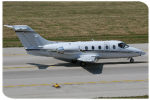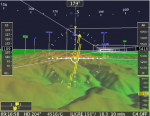Vacany Notice: Internal Fellowship IAP - Post-doctorate opportunity in applications development
 The Integrated Applications Promotion programme (IAP) in the Directorate of Telecommunications and Integrated Applications is now re-advertising a vacancy for an Internal Research Fellowship with a starting date in Autumn 2012. The Research Fellowship will be based at Harwell in the UK. The focus of the fellowship is on applications development; as such it is relevant for applicants from a wide range of academic backgrounds, which may include economics, business studies, commerce, geography, ITC, or a specific industry sector with a potential need for space-based services. Expertise in space science and technology, whilst preferred, is not a pre-requisite.
The Integrated Applications Promotion programme (IAP) in the Directorate of Telecommunications and Integrated Applications is now re-advertising a vacancy for an Internal Research Fellowship with a starting date in Autumn 2012. The Research Fellowship will be based at Harwell in the UK. The focus of the fellowship is on applications development; as such it is relevant for applicants from a wide range of academic backgrounds, which may include economics, business studies, commerce, geography, ITC, or a specific industry sector with a potential need for space-based services. Expertise in space science and technology, whilst preferred, is not a pre-requisite.
About the European Space Agency and the Integrated Applications Promotion (IAP) programme
The European Space Agency is Europeâs gateway to space. Its mission is to shape the development of Europeâs space capability and ensure that investment in space continues to deliver ever more benefits to all the citizens of Europe.
The objective of ESAâs Integrated Applications Promotion (IAP) programme is the development of operational services for a wide range of users. By integrating different space assets (Earth Observation, satellite communication, satellite navigation, manned space technologies), new and improved services can be created on a regional or global scale. The programme responds to real user needs in a wide variety of sectors such as health, safety, energy, transport, finance and development.
The main aim of the fellowship is to research and identify opportunities for new, space-based applications in one or more sectors and to help stimulate the development of new applications and services to meet user needs. In order to carry out his/her function the Research Fellow will work within a dedicated team.
Duties
The Research Fellow will report to the Head of the Applications Business Office in Harwell, near Oxford. He or she will be responsible for research activities within one or more of the target sectors of the Integrated Applications Promotion (IAP) programme (see http://iap.esa.int/projects/all for more details).
Candidates may make an application envisaging one of two possible orientations to the fellowship. If their expertise is in a discipline that can be applied to many different sectors (e.g. economic analysis), then their work while in post is likely to follow that logic and be used to research the potential for new applications in several different markets. If their expertise is sector-specific (e.g. maritime safety and security), then their application should make clear that this is their intended area of focus. There may be some cases (e.g. intelligent transport systems) where their expertise may cut across several sectors but will not be applicable to all. Again, any such intended focus should be made clear in the application.
Subject to the above, the Research Fellow will have as his/her main research activities:
-
Research in a chosen sector or discipline, to assist in the establishment of one or more IAP projects (examples of sectors that might be addressed include but are not limited to Renewable Energy; Intelligent Transport, Smart Cities, Machine to Machine (M2M), Internet of Things (IOT); Insurance/Reinsurance; Maritime Safety and Security).
-
Researching user requirements and market potential for integrated applications within new Regional or Thematic markets.
-
Identification of appropriate Space Capabilities (EO, navigation and telecoms) and how they should be combined with terrestrial systems to create end-to-end solutions.
-
Liaison with industry (suppliers, developers) to identify state-of-the-art and new developments that may be of use for space-based integrated applications.
-
Identification of technological and other gaps, in order to propose future developments, missions or systems.
-
Supporting preparation of promotional materials and workshops to build awareness among user communities, to identify opportunities and to federate demand.
Qualifications
Applicants must have recently attained their doctorate or be close to successfully completing such studies in fields that can be applied to the development of applications and services for one or more of the target sectors for IAP. This might include business, commerce, economic analysis, Geographical Information Systems or the commercialisation of space technology. Expertise in space science and technology (e.g. satellite communications, satellite navigation or earth observation) is preferred but is not a pre-requisite. Experience of applications development is particularly valuable.
The candidate should be proficient in MS Office packages.
The working languages of the Agency are English and French. A good knowledge of English is required for this post.
Other attributes required by the candidate include:
-
Strong analytical and problem solving skills.
-
Creativity and an innovative attitude.
-
Good communication, interpersonal and presentation skills.
-
Ability to cope under pressure and ensure deadlines are met.
-
Attention to detail.
-
Good organisational skills.
-
Results orientated, with a strong drive to deliver.
-
Good team player but also self-motivated and able to plan and manage their own work.
-
Able to work well in an international, multi-cultural environment.
How to Apply
Information on the ESA Research Fellowship Programme and the application form are available at:
http://www.esa.int/SPECIALS/Careers_at_ESA/SEMICLRTJRG_0.html.
Applicants should send their application as described on the ESA web site (CV, covering letter, description of the research interest, list of publications and the filled-out RF application form) to: Alan.Brunstrom@esa.int as well as temp.htr@esa.int. If not possible by email, the reference letters can also be sent via normal mail to: ESTEC HR Division, HFI-HTR, ESA/ESTEC; Keplerlaan 1, PO Box 299, 2200AG Noordwijk ZH, The Netherlands).
Applications satisfying the general conditions for eligibility, to be submitted by Thursday 12th July, will be evaluated and successful applicants will be invited for an interview.



 Details on the Demonstration of
Details on the Demonstration of  Small and mid-sized airports face many challenges. Airport traffic is unevenly distributed over the day; general aviation traffic directed to minor airports cannot usually rely on the availability of flight information services, and in many cases general aviation aircraft flying inside non controlled airspaces cannot rely on air traffic controllers ensuring separation against other aircraft.
Small and mid-sized airports face many challenges. Airport traffic is unevenly distributed over the day; general aviation traffic directed to minor airports cannot usually rely on the availability of flight information services, and in many cases general aviation aircraft flying inside non controlled airspaces cannot rely on air traffic controllers ensuring separation against other aircraft. Another issue faced by small airports is the production Aerodrome Obstacle Charts. This must be done periodically to ensure the required level of safety ANSPs (Air Navigation Service Providers). Currently this is done by the use of expensive aero photogrammetric techniques and on-site surveys by traditional topographic techniques.
Another issue faced by small airports is the production Aerodrome Obstacle Charts. This must be done periodically to ensure the required level of safety ANSPs (Air Navigation Service Providers). Currently this is done by the use of expensive aero photogrammetric techniques and on-site surveys by traditional topographic techniques. Together with the Swiss Space Office, the European Space Agencyâs Integrated Applications Promotion (IAP) programme wishes to announce a vacancy for a Swiss ESA IAP Ambassador Platform manager. This manager will be responsible for the Swiss IAP Ambassador Platform (AP), and will start their duties on 1st October 2012.
Together with the Swiss Space Office, the European Space Agencyâs Integrated Applications Promotion (IAP) programme wishes to announce a vacancy for a Swiss ESA IAP Ambassador Platform manager. This manager will be responsible for the Swiss IAP Ambassador Platform (AP), and will start their duties on 1st October 2012.





 The control and surveillance of borders is an essential function of any state which if done efficiently, can lead to a reduction in cross-border crime and illegal migration.
The control and surveillance of borders is an essential function of any state which if done efficiently, can lead to a reduction in cross-border crime and illegal migration. During this proof of concept demonstration techniques for tracking patrols and distributing the information to commanders, the use of satellite communications, and Earth observation techniques were demonstrated. The Earth observation products included reference mapping, hot spot monitoring, and techniques to develop permeability mapping for the border area. These products were distributed to the field locations over satellite communications links.
During this proof of concept demonstration techniques for tracking patrols and distributing the information to commanders, the use of satellite communications, and Earth observation techniques were demonstrated. The Earth observation products included reference mapping, hot spot monitoring, and techniques to develop permeability mapping for the border area. These products were distributed to the field locations over satellite communications links.
